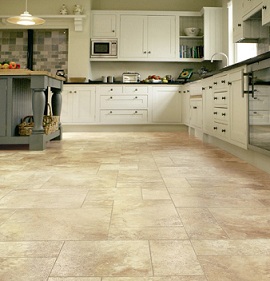
Installing a vinyl floor covering is a time-tested way to provide a durable and cost-effective base for any room. It has also come a long way in regard to its look and there are nearly countless choices for color and design patterns. Closely linked but less popular is vinyl wall covering, which is more suitable for homes than you think.
More on Vinyl Wall Covering Almost everyone has heard of putting down a vinyl floor, but very few are familiar with vinyl wall coverings. Though it has been used for years in commercial settings, vinyl wall covering is becoming popular for residential use as well. It brings the same durability that has been employed in schools, warehouses, and hospitals into the home, but with many different selections of color and style. Vinyl wall coverings can add convenience to your hectic lifestyle as they are much easier to care for than wallpapered or painted walls.
Vinyl Wall Covering Benefits A vinyl wall covering is a good choice for areas where a lot of traffic or wear is expected. When it gets dirty, it is easy to clean and can handle vigorous scrubbing. Vinyl wall covering comes in three different grades. The light duty is tough enough to handle most residential situations. The heavy and extremely heavy duty varieties are more for industrial or commercial use, though they might be appropriate for a workroom or garage. There are a number of different styles and colors for vinyl wall coverings. In most cases, homeowners will be able to find a variety that will fit their needs and color scheme. Vinyl Floor Covering Benefits Vinyl floor covering is most often available in a convenient tile form that is easy and inexpensive to install. Once again, there are enough color and pattern choices that any homeowner should be able to find a style to suit any home’s needs. Vinyl floor coverings that look like natural materials are commonly available. They will give a room the look of stone tile or hardwood flooring, but will cost a lot less and, in the case of wood, will require less maintenance.
Vinyl floors, though not waterproof, are considered water resistant and can be used in more moist areas, like laundry rooms and bathrooms. Vinyl is also considered a “resilient” floor covering, meaning that its surface will have a certain spring. This, to some extent, will protect falling objects from shattering. Vinyl tileflooring is also warmer and more comfortable underfoot than many natural materials.
Vinyl Floor Maintenance The high shine of a vinyl floor covering is easy to maintain. Some come with a clear top coating of either vinyl or polyurethane (the latter being more durable). To keep these floors shiny and new looking requires only sweeping, vacuuming, and an occasional damp (but not wet) mopping.
If the vinyl doesn’t come with a “no-wax” finish, it should be waxed periodically to keep its shine bright. Usually, once or twice a year is sufficient. When too much wax builds up, the floor can become discolored; the wax will, then, have to be stripped off and new wax should be applied.
Vinyl Floor Installation and Repair Vinyl tiles are relatively easy to install and most homeowners with a little do-it-yourself experience will be able to perform the installation themselves. Vinyl sheets can be a bit trickier and you may want to hire a flooring contractor for the job. If an area of your vinyl floor should become damaged, repair is usually a simple matter of replacing the damaged tile. Therefore it is prudent to order additional tiles at the time you purchase your vinyl for emergencies such as these.





